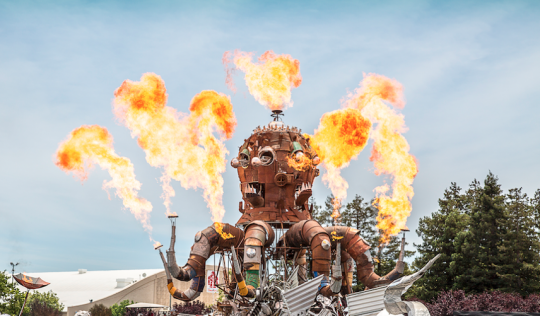El Pulpo Mecanico, which graced a Maker Faire Bay Area you attend -- in 2014?
No experience necessary? You're going to find out.
You're going to take the DIY (Do It Yourself) and Maker movements at their word: "You can do this."
DIY and Maker movements are telling you that reasonable people with the patience to watch the right YouTube tutorials can put it all this stuff together. (FYI: that's the reason for the lead illustration for this post. El Pulpo Mecanico graced the first Maker Faire Bay Area you attend.)
These approaches have gotten easier, because its easier to access the required tools: open source software is free, the electronic hardware it runs on is cheap; and then there's YouTube.
Your plan: to actually assemble something Mixed Reality-ish and try it out in real life, in a real place. You want to see if you can make a difference: help "make a space a place" -- a phrase you are hearing now that you are following a few placemakers on social media.
And it has to be real, on location: something with actual silicon chips, a footprint in the actual world, and code, and a little bit of electricity, and internet connectivity.
Hold My Beer. You're going in.
You know that the internet has started to suck politically, and socially, and privacy-ly, but when you want to learn how to do something, the internet is still awesome, and getting awesomer.
Maybe there really isn't any there there in mixed reality, but you didn't want to take someone else's word for it. And you don't have to. Because it's now possible for just about anyone to break out some technology and design a test or a prototype.
Hacker journalism?
You start to assemble a mixed reality hardware and software toolkit for your placemaking journey.
Your first purchase: an electronic brain, a quarterback.
